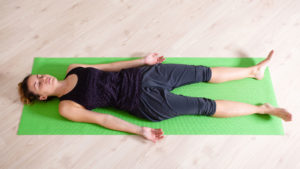As a new yoga teacher, you will often find yourself spending hours planning your classes. I used to do the same when I was new to the practice and trying to create a perfectly choreographed yoga session that I had seen the great yogis conduct. I would spend hours poring over anecdotes, self-help, and spiritual books to find inspiration. Next, I would listen to hours of music from CDs and from the Internet trying to find just the right blend. The only problem was that sometimes I would get a great class but a lot of the time it just did not work.
Over the years, I have found that it may be better not to take myself too seriously and rather just be in the flow of things. Don’t get me wrong I still plan my lesson but I prefer a combination of improvisation and planning to make for a great class. In fact, when I am not in the mood for planning, I just grab a copy of No Prep Yoga Plans and flip through a few themed lesson sets before heading to the studio. I have found that this combination of planning and improvisation can lead to spontaneous, and very lively class sessions. Nonetheless, if you are a hardcore planner, try the following tips on planning a great yoga class.
Have a Lesson Plan
Even as spontaneous classes can be fun, sometimes you need to mix it up. If you have been teaching yoga for a while, you will know that there are tested, effective, even if small kriyas, postures, and repository sets which you can find in the No Prep Yoga Plans, that your classes always seem to respond to. With a copy of No Prep Yoga Plans that comes with most of these elements set out in neat themes and sequences, you can quickly make a lesson plan and almost guarantee a great yoga class. However, you have to keep in mind that the lesson planning does not need to be a rigid or formal activity, as you can plan a class in your head by tailoring alongside a theme.
Develop the Lesson towards a Peak Point
Given that you have your themes and learning objectives, what I have found makes for some of the most interesting classes that learners enjoy is when the lesson leads up to a peak activity. For instance, if your objective is the Chakrasana (wheel pose), the lead needs to be a warm-up such as gentle shoulder stretches. After getting to the peak point, spend some time there prompting the students to try the different ways of doing it. Once the students can do the pose satisfactorily, do a gentle cooling down from the peak. For instance, have the students practice folding forward when they finally do the Wheel Pose.
Add-In Elements of Complexity
Regardless of the style of yoga you offer, you can always challenge your students by teaching elements of affirmation, mudra, mantra, and pranayama which are not found in the typical asana focused lesson. Teach these elements and tailor them to your lesson objectives and themes so that the learners can gain a broader understanding of the yoga discipline. Other ways to add a layer of complexity to lesson planning is by enhancing the postures you are teaching. By having levels to your postures, everyone in the class regardless of their level of understanding can feel included in the lesson. For instance, if you are teaching the class a simple twist, a good enhancement is to ask those that feel more confident to go further, by taking a bind alongside their twist.
Have a Bhavana or Theme
This is one of the most important things in planning that could make or break your class. Have a theme around which you incorporate a set of poses to help the students experience and embody the attitude and feeling you are aiming for. For instance, you could decide to theme your lesson on the theme of gratitude. In such a theme you could have the students do poses that involve expansion of the torso and gentle lifting of the chest as you lead them towards heart opening poses. While choosing a theme can be tough, there are no right and wrong answers as long as you think outside the box. Some ideas to get you buzzing could include:
1. Choosing a time of year based theme.
2. Narrow it down to a social climate and focus on something neutral such as caring, compassion, and kindness.
3. Go with a natural event such as a new or full moon.
4. Select a feeling or emotion for your theme.
Go to Other People’s Classes
Just because you have qualified to become a yoga teacher does not mean that you know it all. I have often found that taking as many classes as possible increases not only my repertoire but also my confidence in planning and teaching a class. By going to other people classes, you get to see other perspectives such as what students want, how best to teach a given asana, how to do different poses, all of which can be invaluable in your lesson planning. Of course, if you do not have the time to attend classes and need some inspiration on the go, you can go for the No Prep Yoga plans. With 30 + Ready-Made Themed Yoga Sequences, 16 Relaxation Scripts, 30 Guided Meditation Scripts among many other yoga themes derived from actual practice.
Consider How and Whether to Use Music
Judicious use of music can enhance yoga practice and make the class a more enjoyable experience. Plan your music in advance so that you have music that draws in the attention and concentrati0n of the students rather than directing it outward. Depending on the theme of the class, select the appropriate music. For instance, if you are doing vinyasa go with rhythmic and flowing tunes and spa-like or ambient songs would be better for restorative or yin themes.



